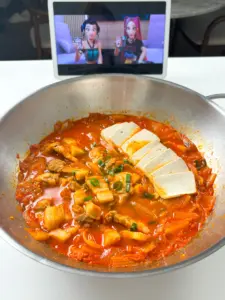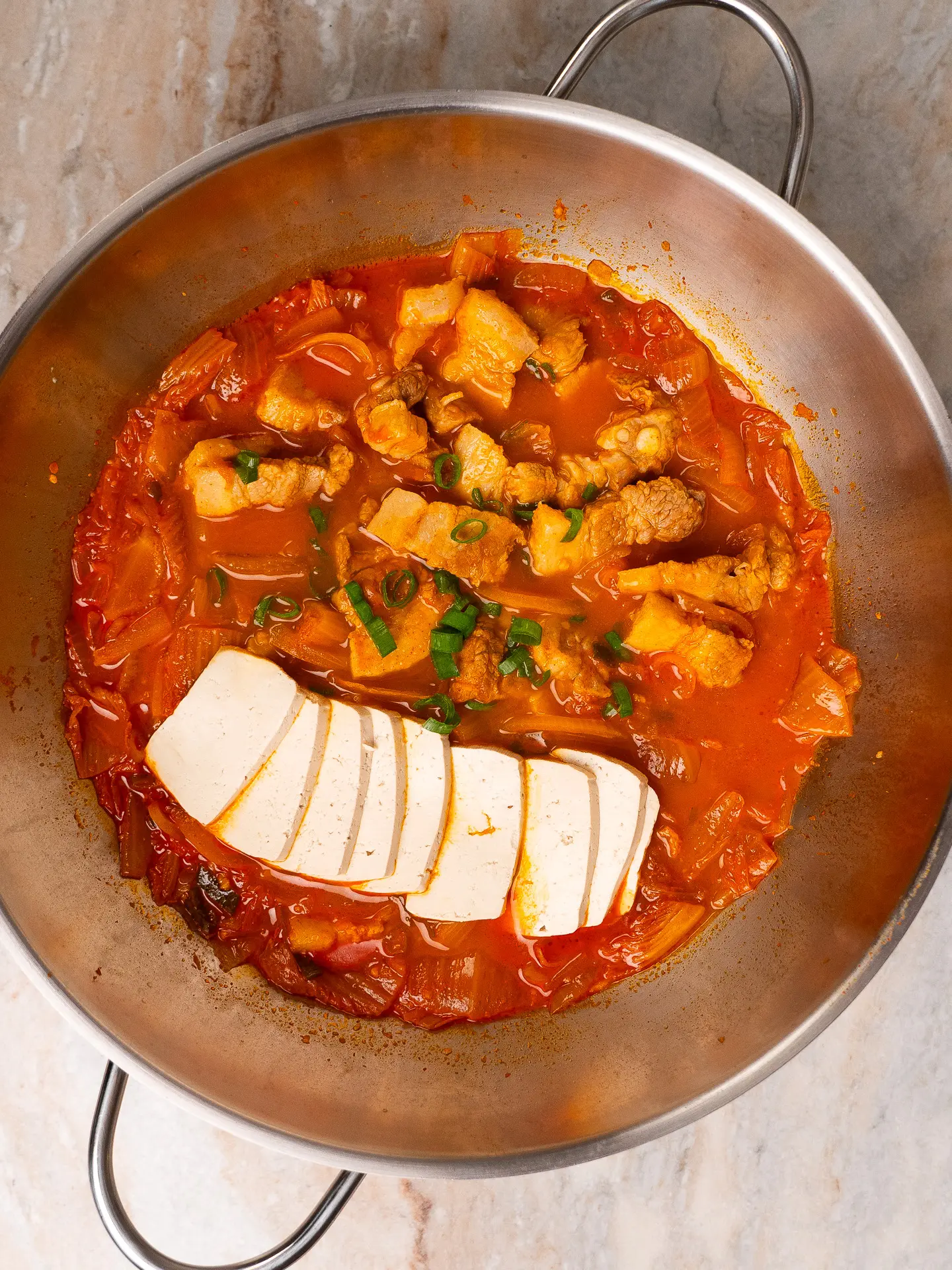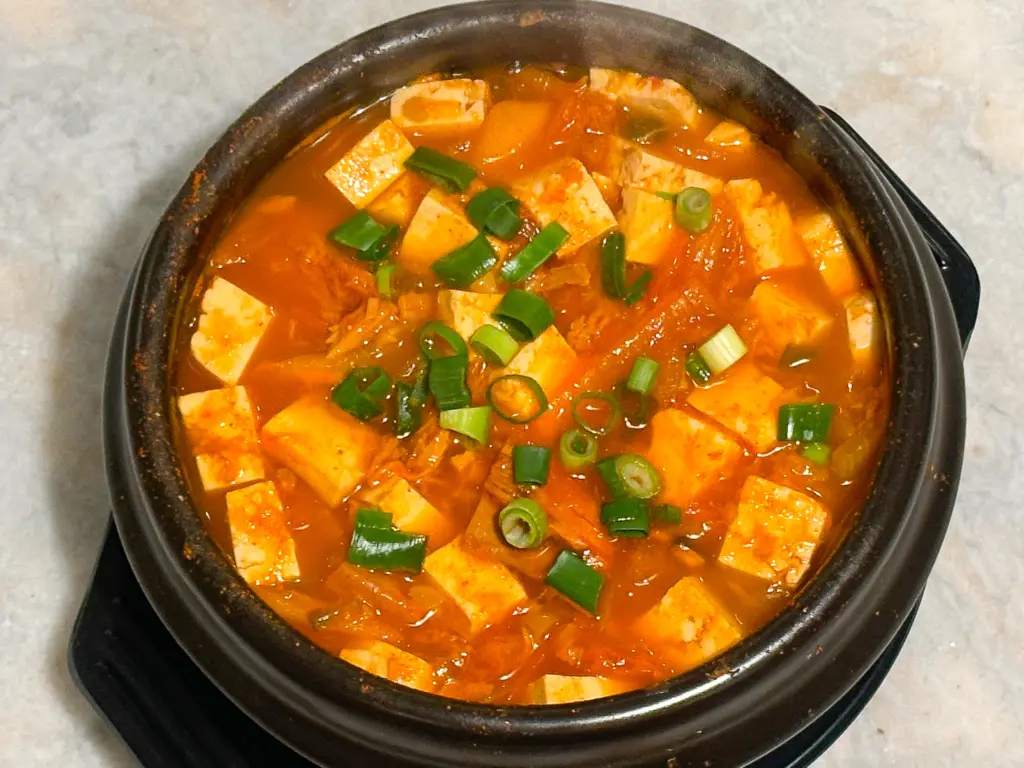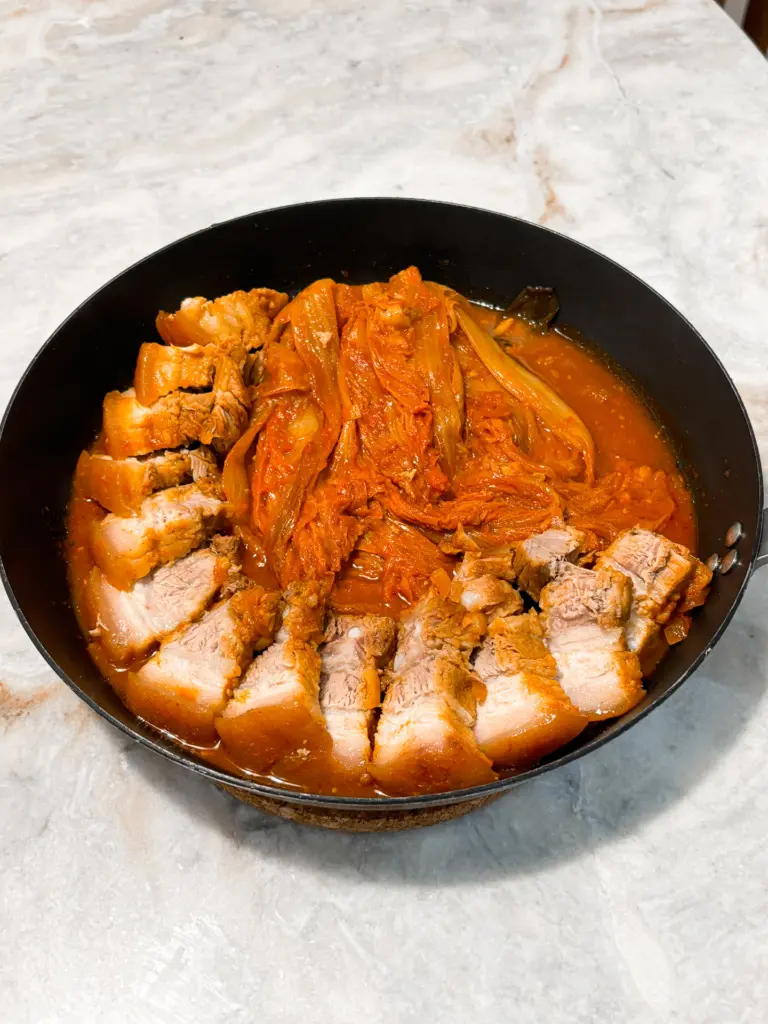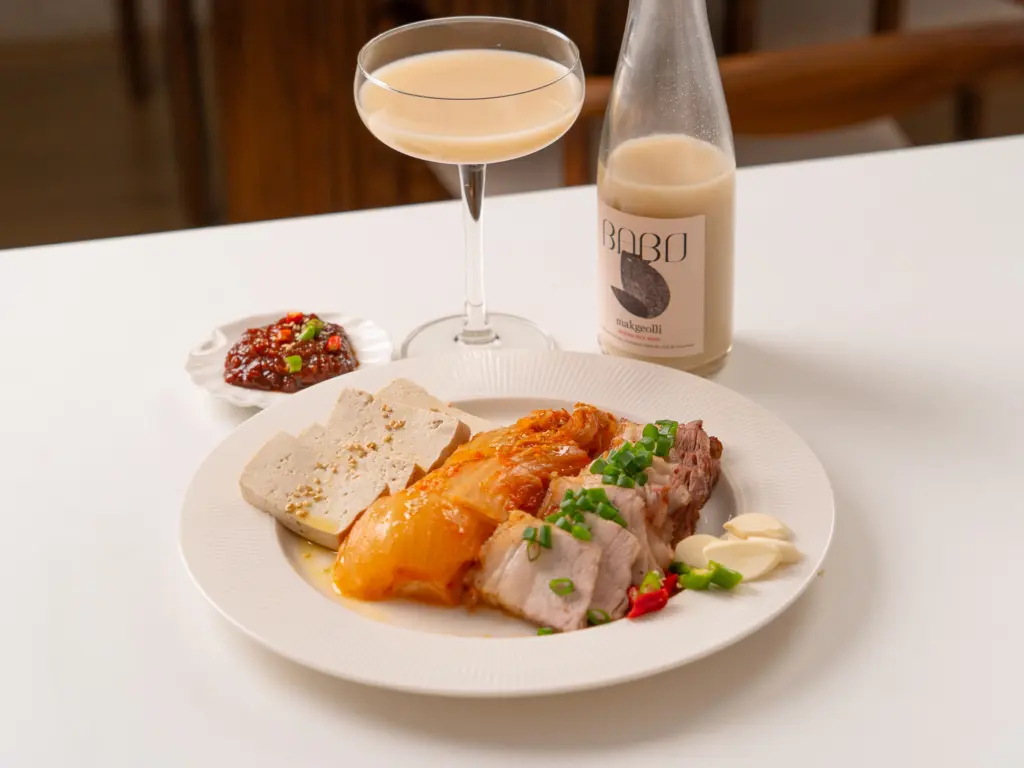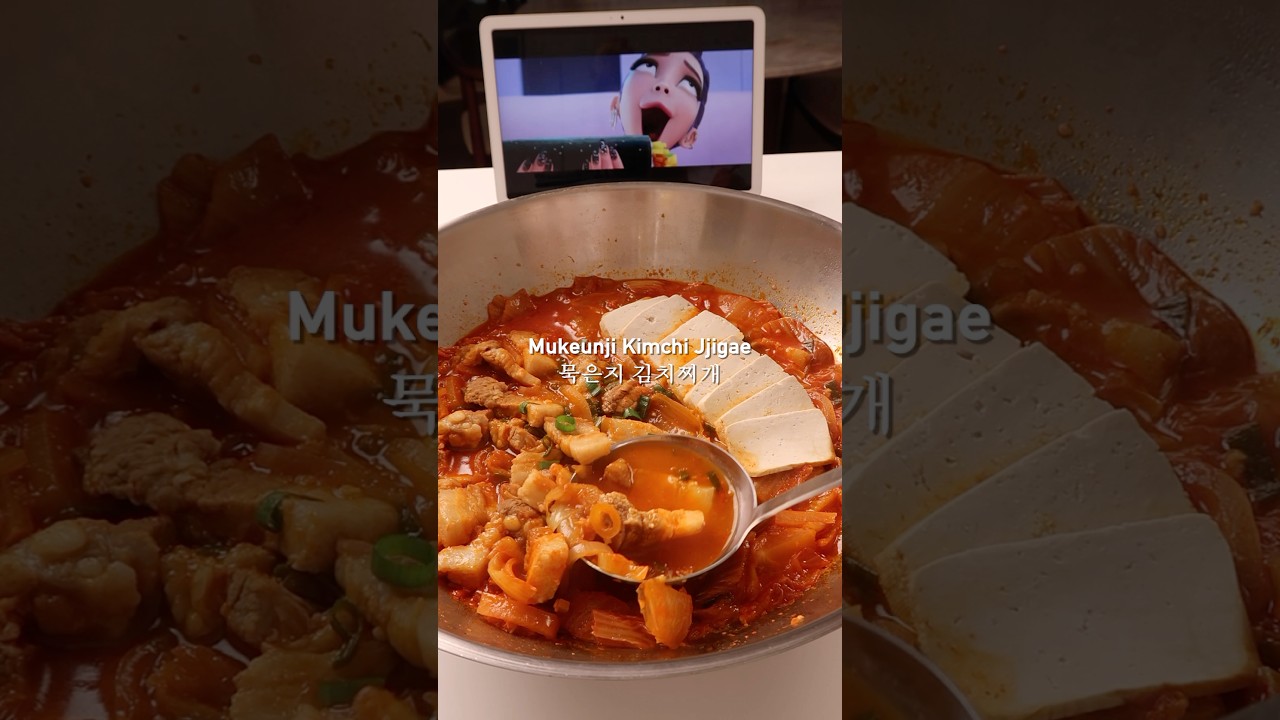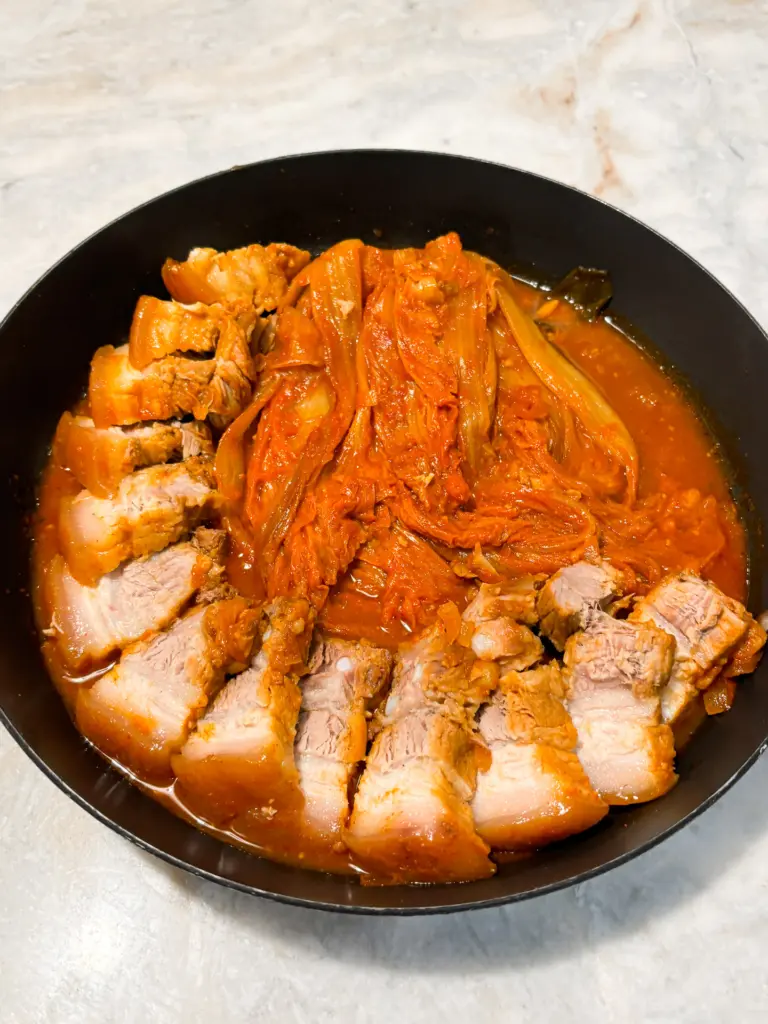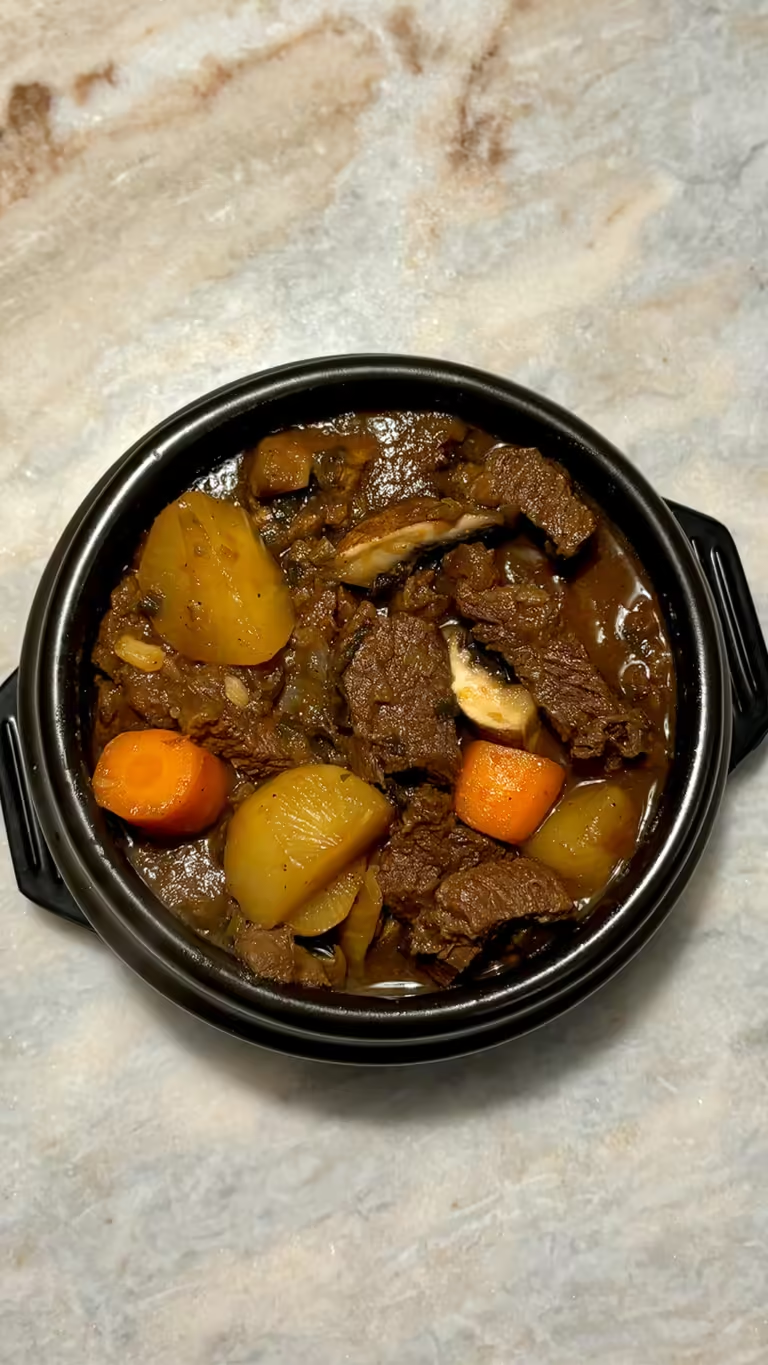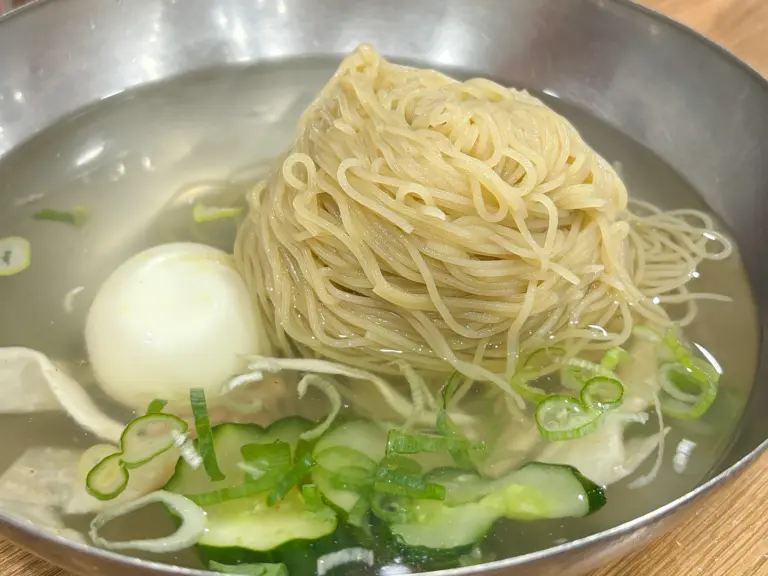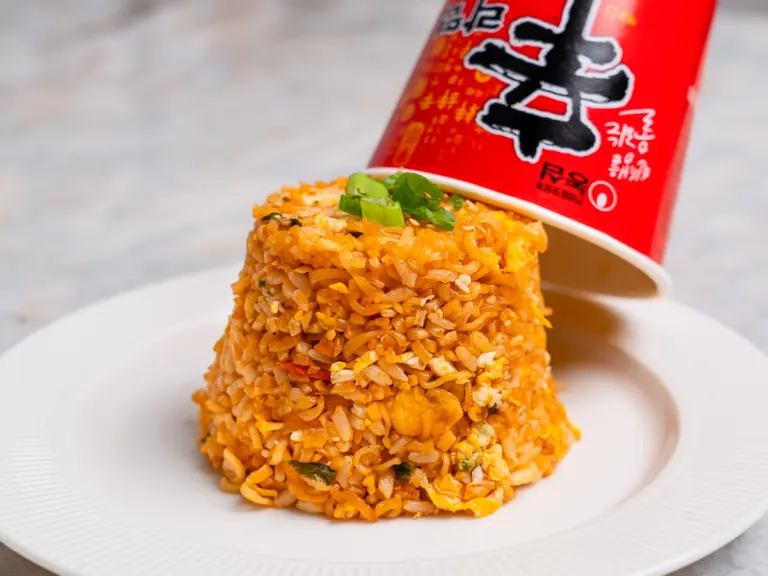Easy Pork Kimchi Jjigae Recipe with Aged Kimchi
Do you have kimchi that’s too sour? Don’t worry, it’s actually the perfect time to make the most flavorful kimchi jjigae! In this post, I’ll share the most authentic way to make it, just like we do in Korean homes.
Plus, I’ll show you an easy trick to balance out the sharp sourness and bring out a deeper, richer flavor.
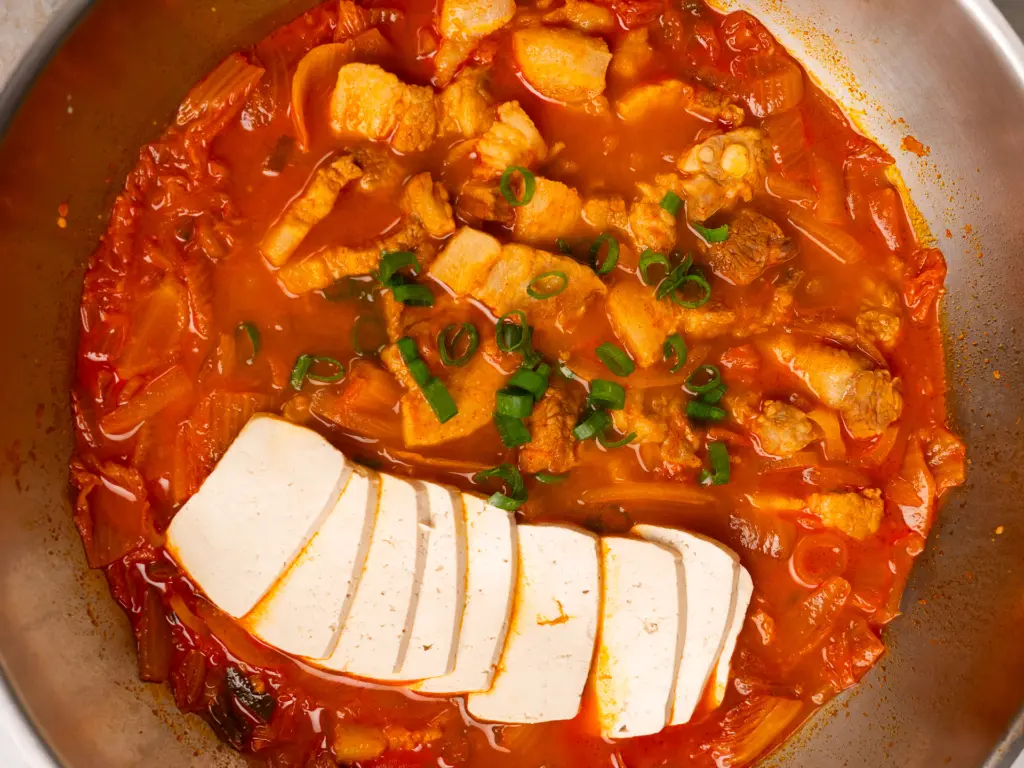
What is Kimchi Jjigae?
Kimchi jjigae is a stew made primarily with kimchi and less water than a typical soup (Guk). Napa cabbage kimchi is the most common type used, and aged sour kimchi brings out the best flavor. The most common additional ingredient is pork, though canned tuna or mackerel can also be used. Fresh fish can be used as well. Additional ingredients, such as green onions, onions, garlic, tofu, and mushrooms, are added to enhance the flavor of the broth.
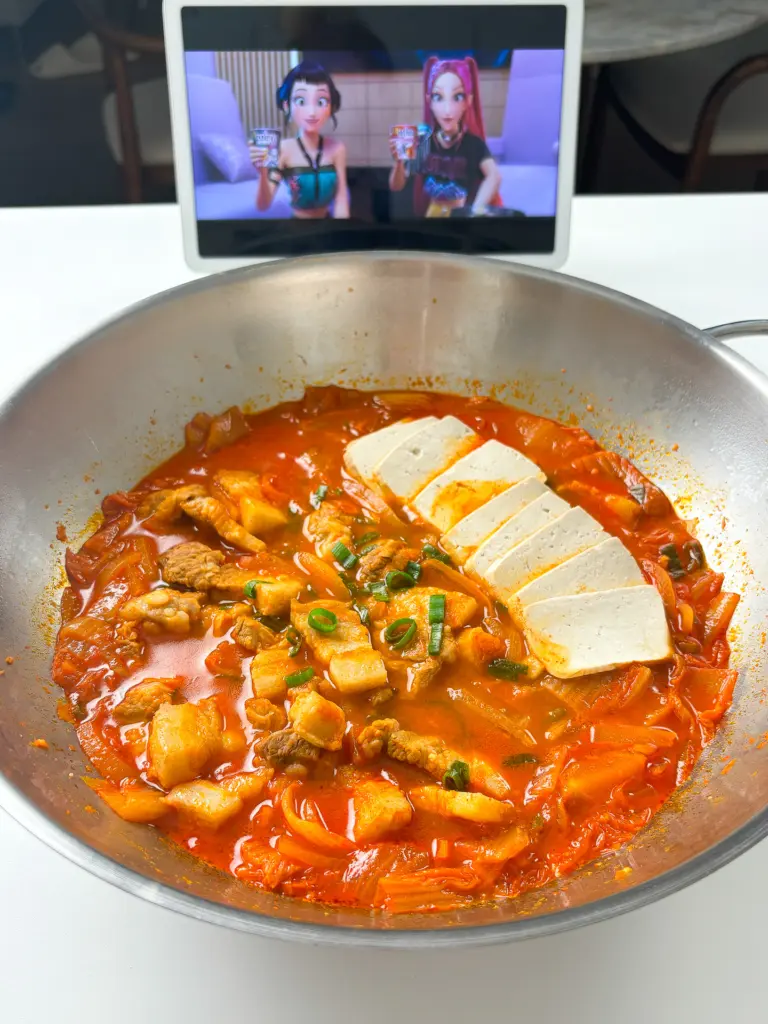
Kimchi stew is a classic home-cooked dish and a comfort food for Koreans. After traveling abroad, many Koreans look forward to eating kimchi stew first when they return home.
What is Aged Kimchi?
Aged kimchi refers to kimchi that has been fermented for a long time, known in Korea as Mukeunji (묵은지). Almost every Korean household owns a special kimchi refrigerator designed to maintain the ideal temperature and humidity for kimchi storage. This allows kimchi to be stored for up to 3 years without becoming overly sour or mushy.
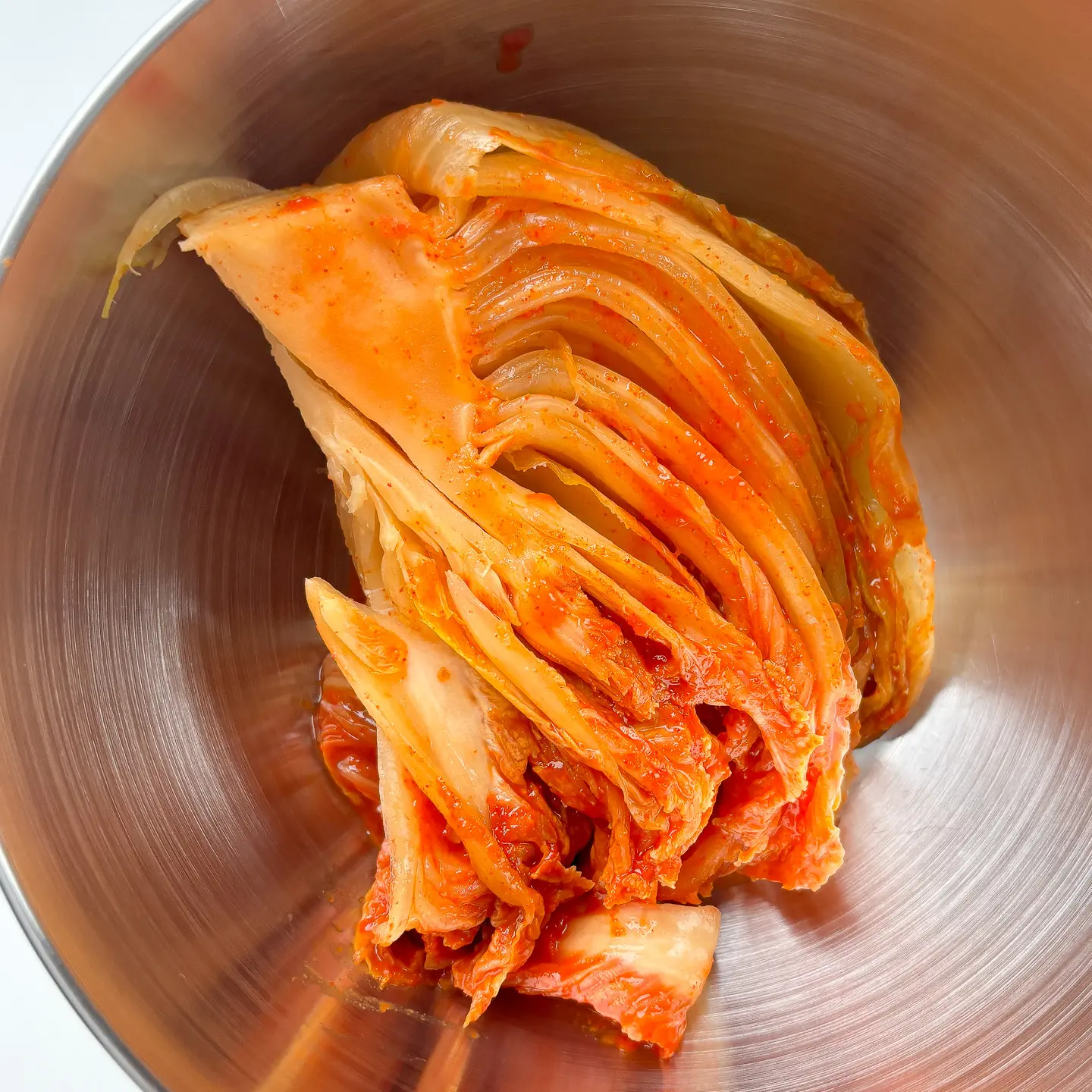
However, here in Belgium, where I recently moved, hardly anyone has a kimchi refrigerator. I haven’t seen one yet! Because of this, kimchi ferments and sours much faster. After just 4 months, it can become very sour. But when that happens, you can use this aged, sour kimchi to make delicious dishes like kimchi jjigae (kimchi stew) or kimchi jjim (braised kimchi).
Why Aged Kimchi Makes Kimchi Jjigae Taste Better?
Adding aged, fermented kimchi to kimchi jjigae allows the seasonings to develop deeper, richer flavors. Although aged kimchi is too sour to eat raw, cooking it with pork or fish oils balances out the sourness and makes the meat more tender. In Korea, there are even restaurants that specialize in making kimchi stew with only aged sour kimchi, showing just how much the Korean people love this version of the dish.
NO GOCHUJANG IN KIMCHI JJIGAE
Many Koreans don’t add gochujang to kimchi jjigae. Of course, you’re free to add it if you want, but in my family and among my friends, no one uses gochujang. Korean restaurants never put gochujang in kimchi stew — at least, all the places I’ve been to don’t.
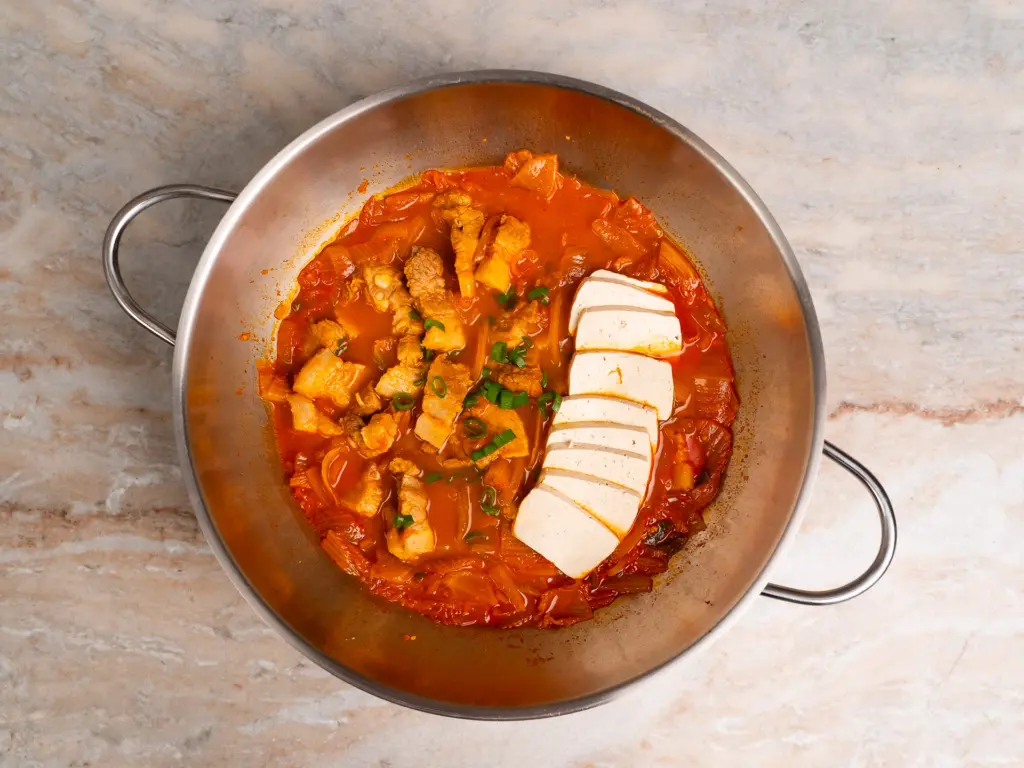
Because gochujang has a very strong flavor and aroma, even a small amount can turn kimchi stew into more of a gochujang stew. If you like that taste, feel free to add it, but this time, try making truly authentic kimchi jjigae without it.
Adding it is totally up to you! I sometimes put ketchup in pasta myself, but I don’t think Italians would call that authentic, haha.
More Delicious Kimchi Stew Recipe
Simmer Longer
The longer kimchi chigae cooks, the better it tastes. As the water reduces, gradually add a little more while simmering. Kimchi stew tastes even better the next day and even better the day after that.
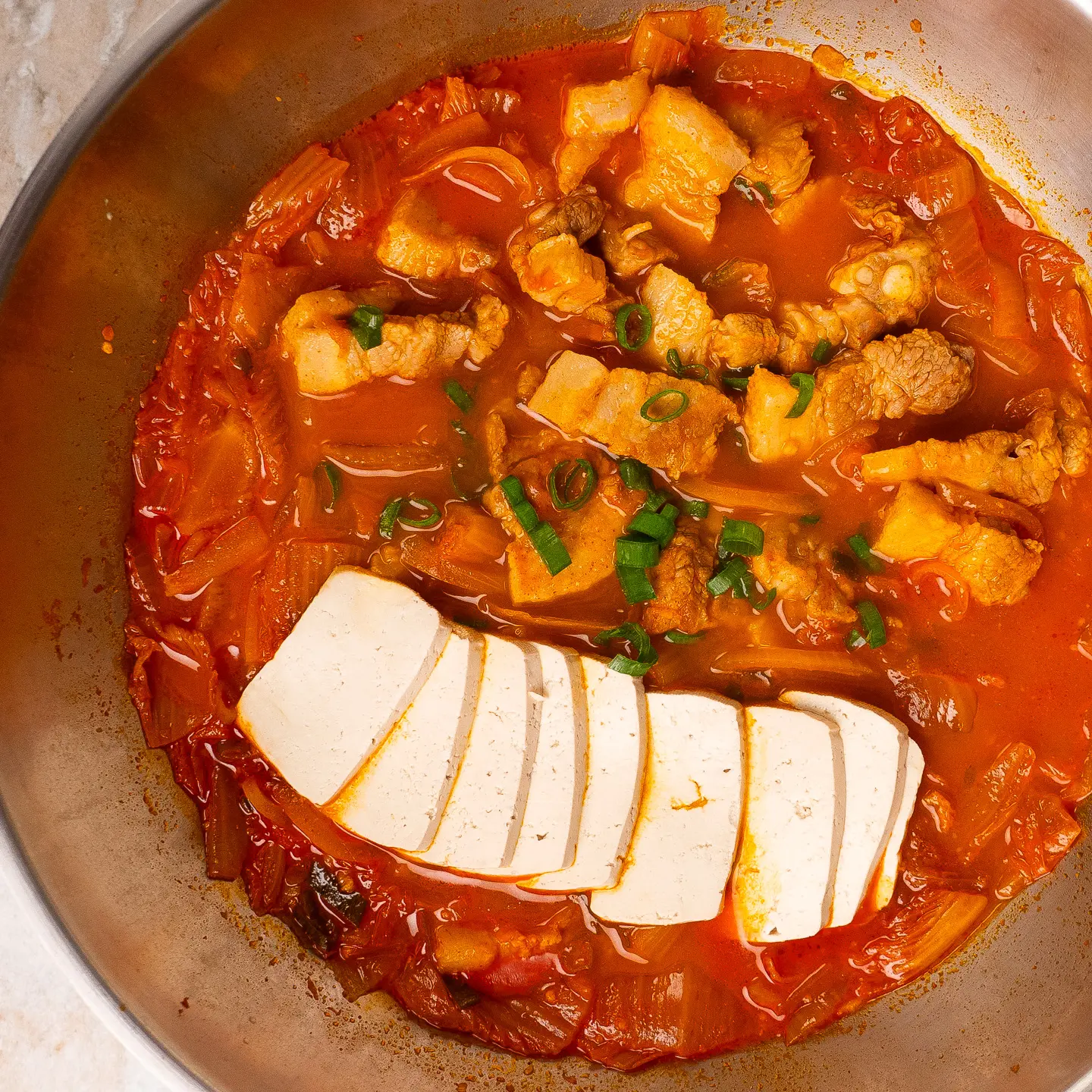
If Your Kimchi Jjigae Is Too Sour
Add sugar. Sugar balances out the sourness nicely. Or, rinse the kimchi before making kimchi jjigae (turning it into kimchi jjim style), which reduces sourness a lot and makes it really tasty.
If Your Kimchi Is Not Fermented Enough
Add a splash of vinegar. It gives a flavor similar to well-aged kimchi. Sometimes vinegar is added to regular kimchi stew to boost umami.
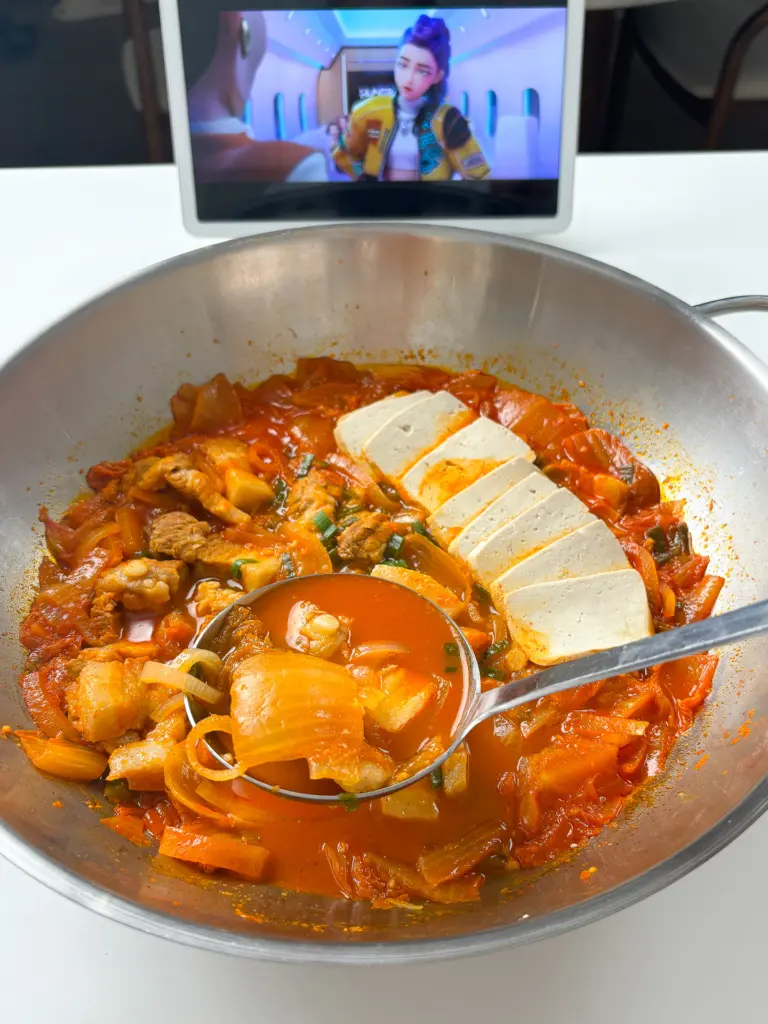
Broth
Using a seafood broth, like dried anchovies, makes the flavor much deeper and richer.
- Korean Seafood Broth: US
Best Pork Cuts for Kimchi Jjigae
- Pork Belly (Samgyeopsal): When Koreans make kimchi stew, they usually add pork belly, which has a lot of fat. The fat balances the sourness of the kimchi, making the stew richer and smoother.
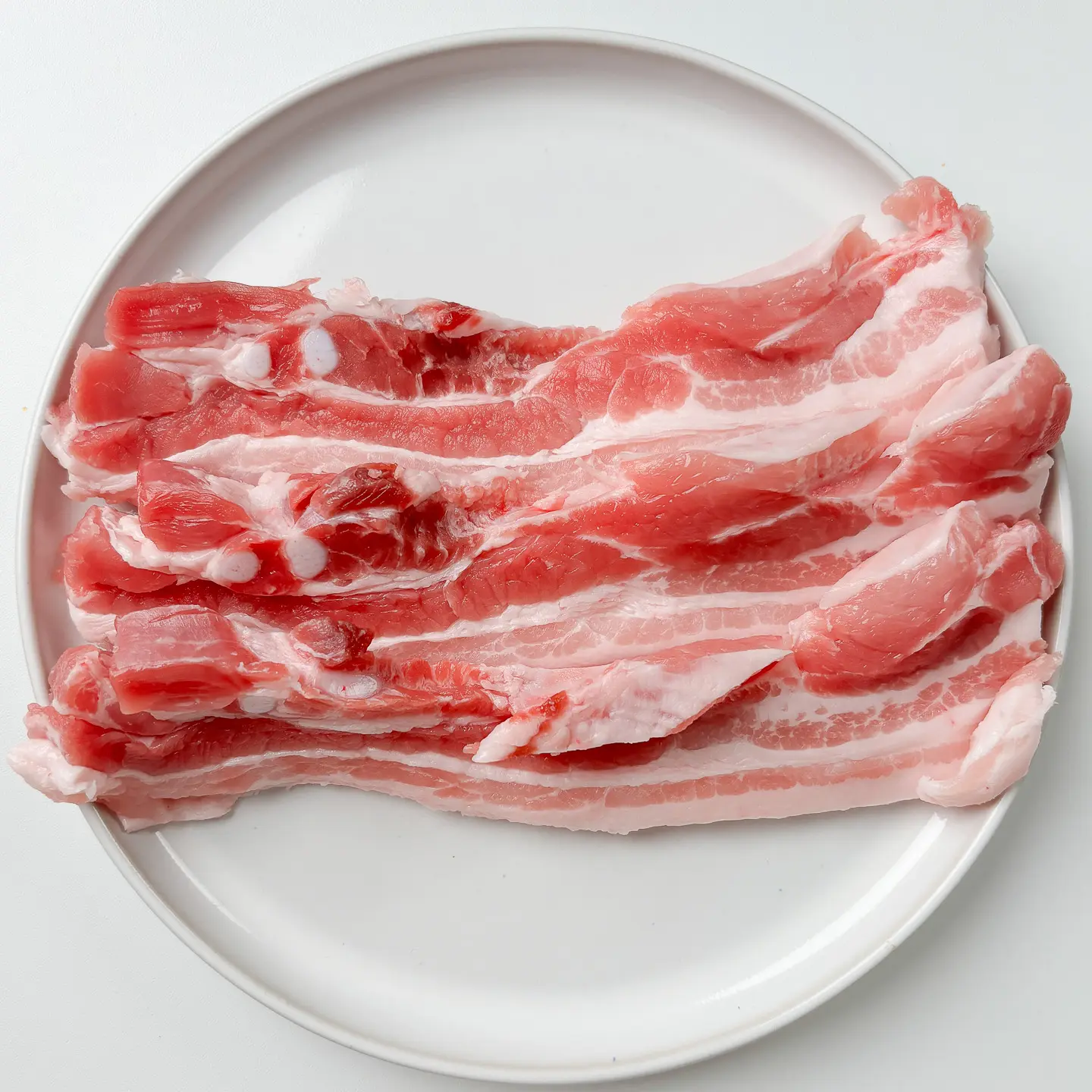
- Pork Neck (Moksal): For those who find pork belly too fatty or heavy, thick slices of pork neck are a great alternative. It has a moderate fat content, resulting in a cleaner, yet still tender, stew compared to pork belly.
- Pork Shoulder (Aptdarisal): n Europe, pork belly is less popular and usually more expensive than in Korea. Many people use pork shoulder as a budget-friendly alternative. It’s thick and tender with just the right amount of fat, making it perfect for kimchi stew.
Instead of Pork
- Canned Fish: If you don’t eat pork, canned fish like tuna, mackerel, or saury works really well and makes a clean, delicious kimchi stew. This is the authentic tuna kimchi stew recipe. It’s called chamchi kimchi jjigae.
Authentic Tuna Kimchi Jjigae (Kimchi Stew)
- Sausage or Ham: Koreans sometimes add frankfurter sausages or canned ham like Spam as a substitute.
- Dumplings: My mom often made kimchi stew with dumplings added, and it’s really tasty that way too.
- bibigo Mandu(gyoza): US
- Vegan: For a vegan kimchi jjigae recipe, cook kimchi with mushrooms and tofu only, or add vegan dumplings. Since regular kimchi isn’t vegan, be sure to use vegan kimchi. A secret kick is to add a spoonful of perilla oil (dill seed oil) — it gives the stew a rich, deep flavor.
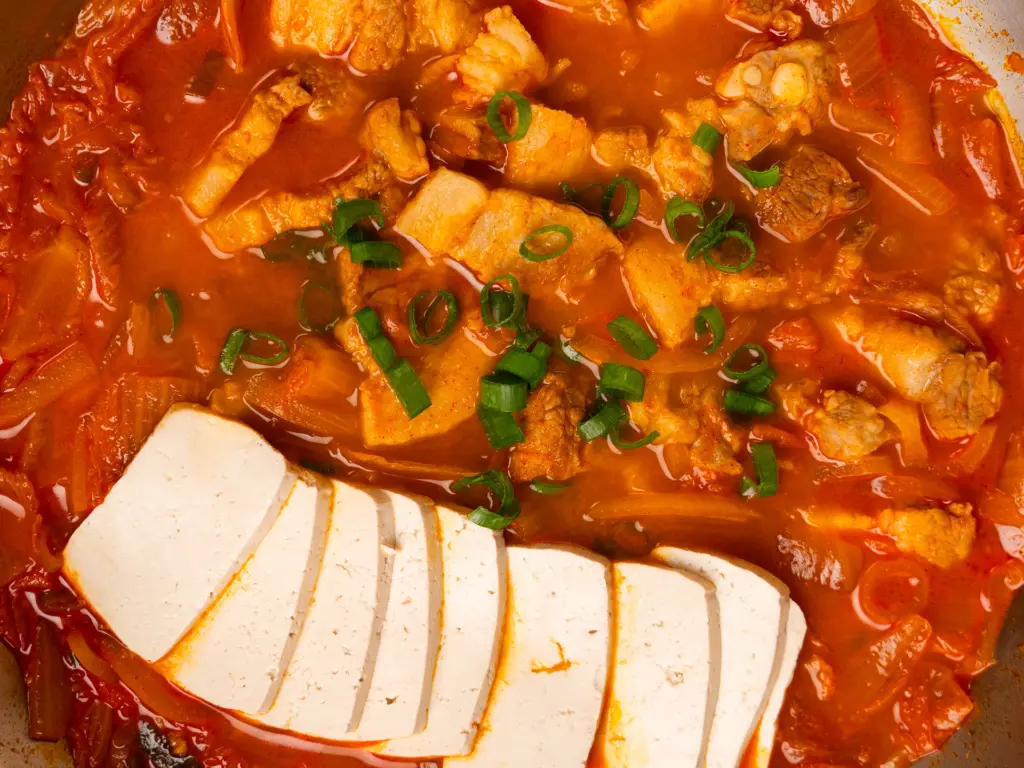
Side Dishes That Go Well Together
What to serve with kimchi jjigae?
- Fried Egg: One of the most beloved Korean meals is kimchi stew served with a fried egg and steamed rice. The fried egg isn’t served separately but placed right on top of the rice. Taking a bite of kimchi chigae followed by some soft egg and rice creates an amazing harmony of creaminess and spiciness.
- Frankfurter Sausage: If you add frankfurter sausages along with the fried egg, it becomes a favorite meal for 99% of Koreans.
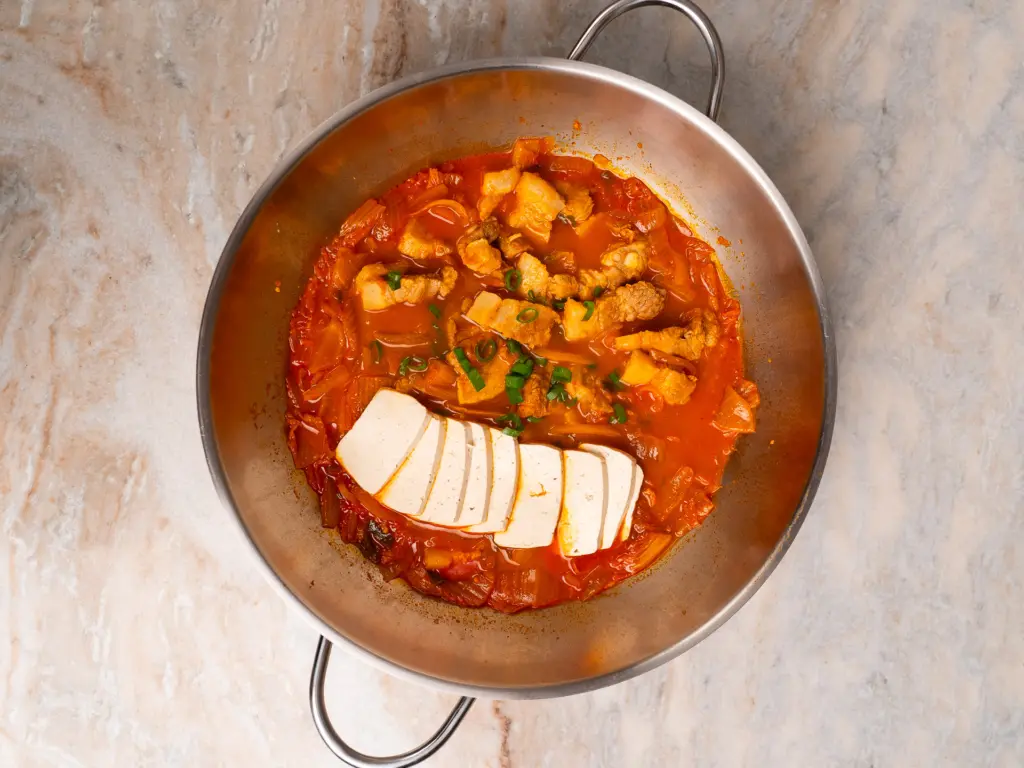
- Seasoned Seaweed (Jomin Kim): When seasoned seaweed is added on top of the fried egg and sausage, it might just become a meal where Koreans could eat two bowls of rice!
- Kimchi: Ironically, it’s very common to eat fresh kimchi alongside kimchi jjigae. The flavors are different! Koreans often enjoy kimchi fried rice, kimchi stew, and fresh kimchi all together—no problem at all! Haha.
5 Kimchi Food
In Korea, you can make a wide variety of dishes with just kimchi. For example, kimchi is used in Budae Jjigae (Army Stew). This demonstrates how deeply kimchi is embedded in Korean cuisine. There are many dishes, but here are 5 popular and representative ones.
- Kimchi Jjim: Kimchi Jjim: Compared to kimchi stew, kimchi jjim is cooked with less liquid and simmered longer to develop a deeper flavor. It contains more meat or fish. This version is made with whole pork belly, and it’s my Korean mom’s secret Kimchi jjim recipe—you won’t want to miss it!
Pork Belly Kimchi Jjim (Braised Kimchi)
- Kimchi Fried Rice (Kimchi Bokkeumbap): When you don’t feel like cooking, just roughly chop kimchi and ham with scissors and stir-fry them with rice. For Koreans, this is soul food. Adding a fried egg on top makes it even better.
- Kimchi Jjigae: This is the recipe introduced today. It’s a stew with pork or fish as the main ingredient, along with tofu, mushrooms, green onions, onions, and garlic. It’s cooked with less water than a soup, and the kimchi and ingredients come together to create a harmonious flavor.
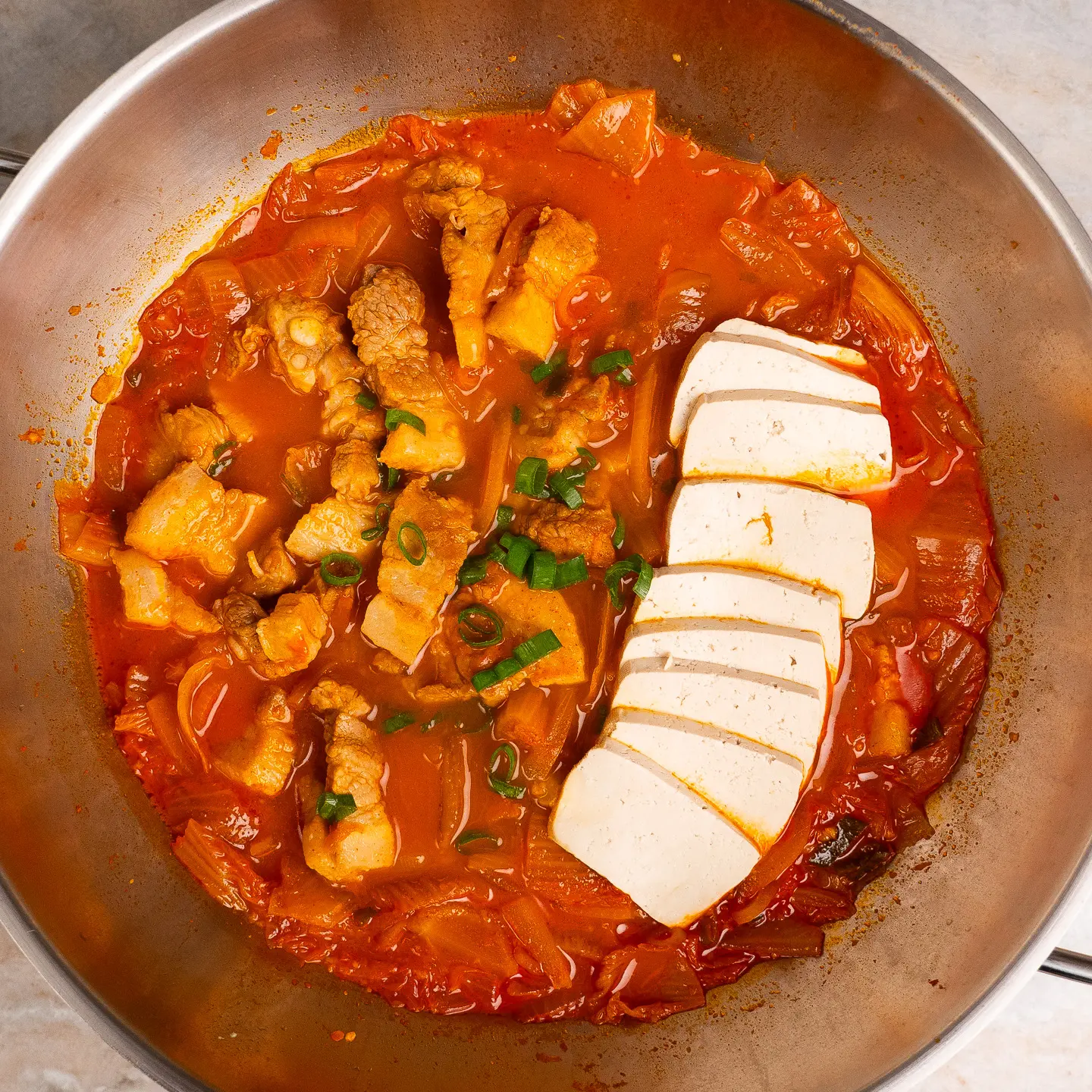
- Tofu with Kimchi (Dubu Kimchi): This dish is stir-fried kimchi served with tofu. Sometimes it’s just tofu and kimchi, or it can be served as a trio (sam-hap) with bossam (boiled pork). It pairs really well with makgeolli (Korean rice wine).
Samhap: Bossam Dubu Kimchi Trio
- Kimchi Soup (Kimchi Guk): This is made with more water than jjigae, making it more of a soup. Usually, seafood broth is used with bean sprouts to make kimchi bean sprout soup. It’s a common home-style soup and often enjoyed as a hangover cure.
Ingredients Guide
- Jjigae Pot: US | UK
- Rice Cooker: US | UK
- Korean Dashida: US | UK
- Gochugaru (Korean red chili powder): US | UK
- Korean Fish Sauce: US l UK
- Kimchi: US | UK
- Rice: US | UK
Disclosure: Blonde Kimchi is part of the Amazon Services LLC Associates Program, an affiliate advertising program that allows websites to earn advertising fees by linking to Amazon.com and promoting products.
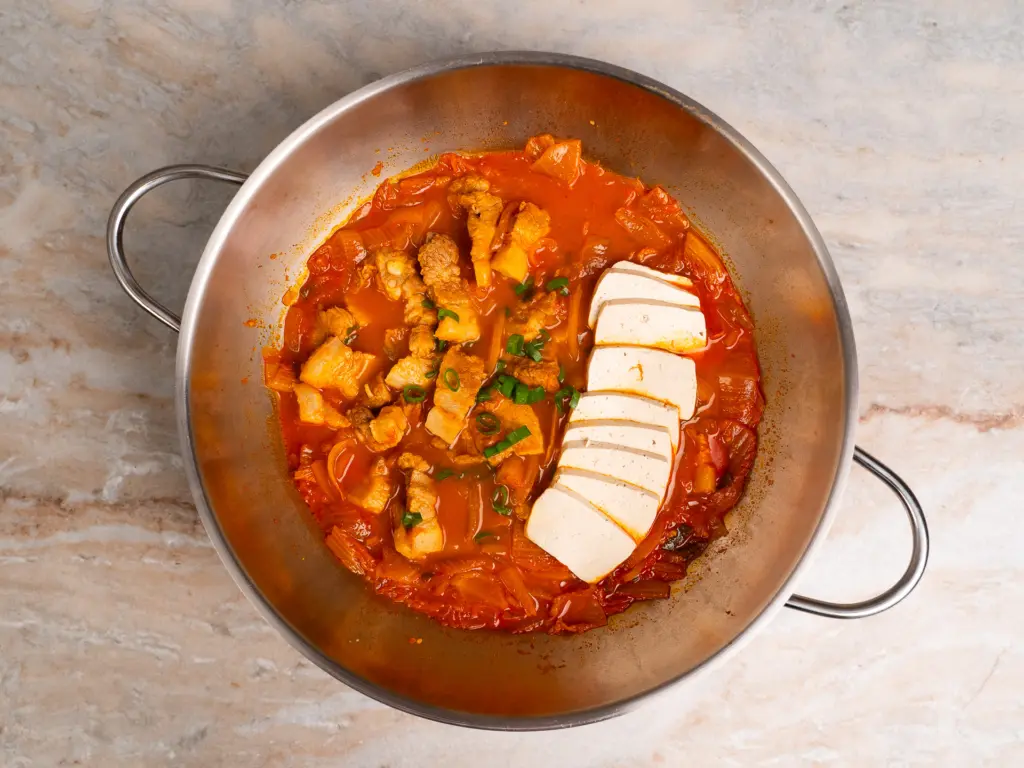
Easy Pork Kimchi Jjigae with Aged Kimchi
Equipment
Ingredients
- 300 g pork belly
- 1/3 head aged kimchi (If it's big kimchi, you can use 1/4 head)
- 1 tbsp minced garlic
- 1 ladle kimchi juice
- 0.5 tbsp Korean beef dashida
- 450 ml water
- 1/2 onion
- 1/2 stalk green onion
- 1/2 block tofu (125g)
- 1 tbsp cooking oil
- 1 tbsp sugar (for sour kimchi. You can reduce or skip it if your kimchi isn't too sour)
- 1 tbsp Korean anchovy fish sauce
Instructions
- Cut the pork belly and kimchi into bite-sized pieces.Tip: Use kitchen scissors to cut directly into the pot — no cutting board to clean! Slice the onion and finely chop the green onion.
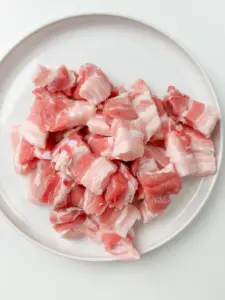
- Heat 1 tbsp of oil in a wok or pot over medium heat.Add the pork belly and cook until the surface is no longer pink.
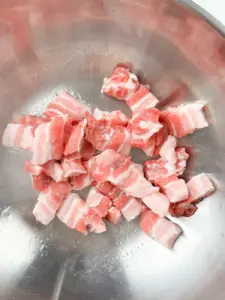
- Add the minced garlic and stir-fry for another minute.
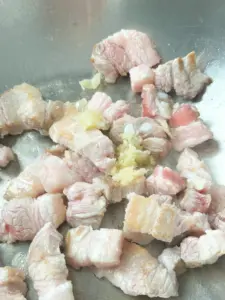
- Add the chopped kimchi and 1 tbsp of sugar. (Skip or reduce sugar if your kimchi isn’t too sour.)
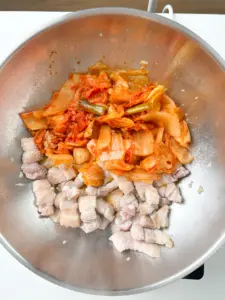
- Pour in 450ml of water.Add 1 ladle of kimchi juice, 1 tbsp anchovy sauce, and 0.5 tbsp beef stock powder.
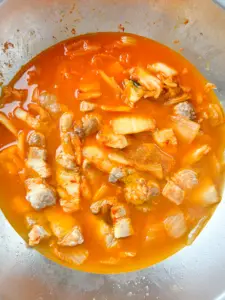
- Add the onion and green onion.Cover with a lid and simmer over medium-low heat for about 20 minutes. If the water reduces too much, add a little more water as needed.If you cook longer, it tastes better!
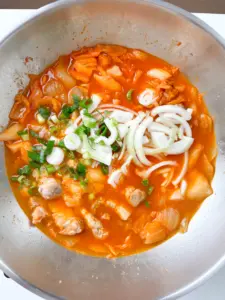
- Cut the tofu into bite-sized cubes and gently add to the stew.Simmer for another 3 minutes, then serve hot.

Pork Kimchi Jjigae 돼지고기 김치찌개
- The fat rendered from the pork gives the broth a rich and deep flavor.

- Jal meokgetseumnida! 잘 먹겠습니다!
